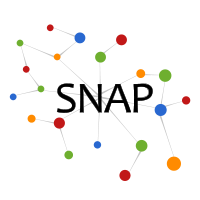Chemical-gene interaction network
Dataset information
This is a chemical-gene interaction network that contains information on interactions between genes (i.e., proteins encoded by genes) and small molecules. Nodes represent chemicals and genes, and edges represent biological interactions between them. For example, small molecules can activate or inhibit proteins, such as enzymes or receptors, and can target proteins by binding to them with different binding affinities. For instance, aspirin has relatively low binding affinities, whereas rofecoxib is specifically binding protein PTGS2. The chemical-gene interaction network is global and as such considers interactions anywhere in an organism.
| Dataset statistics | |
|---|---|
| Nodes | 9569 |
| Drug nodes | 1774 |
| Gene nodes | 7795 |
| Edges | 131034 |
| Nodes in largest SCC | 9538 |
| Fraction of nodes in largest SCC | 1.000000 |
| Edges in largest SCC | 131001 |
| Fraction of edges in largest SCC | 0.999748 |
| Diameter (longest shortest path) | 8 |
| 90-percentile effective diameter | 3.864298 |
The network aggregates high-throughput experiments data, manually curated datasets, and the results of several prediction methods into a single global network of chemical-gene interactions.
References
- Modeling polypharmacy side effects with graph convolutional networks. Marinka Zitnik, Monica Agrawal, and Jure Leskovec. Bioinformatics. 2018.
Presented at ISMB 2018
- STITCH 5: augmenting protein–chemical interaction networks with tissue and affinity data. Szklarczyk, Damian, et al. Nucleic Acids Research. 2015.
Files
| File | Size | Description |
|---|---|---|
| ChG-InterDecagon_targets.csv.gz | 2.5MB | Drug-target protein associations from several curated databases |



